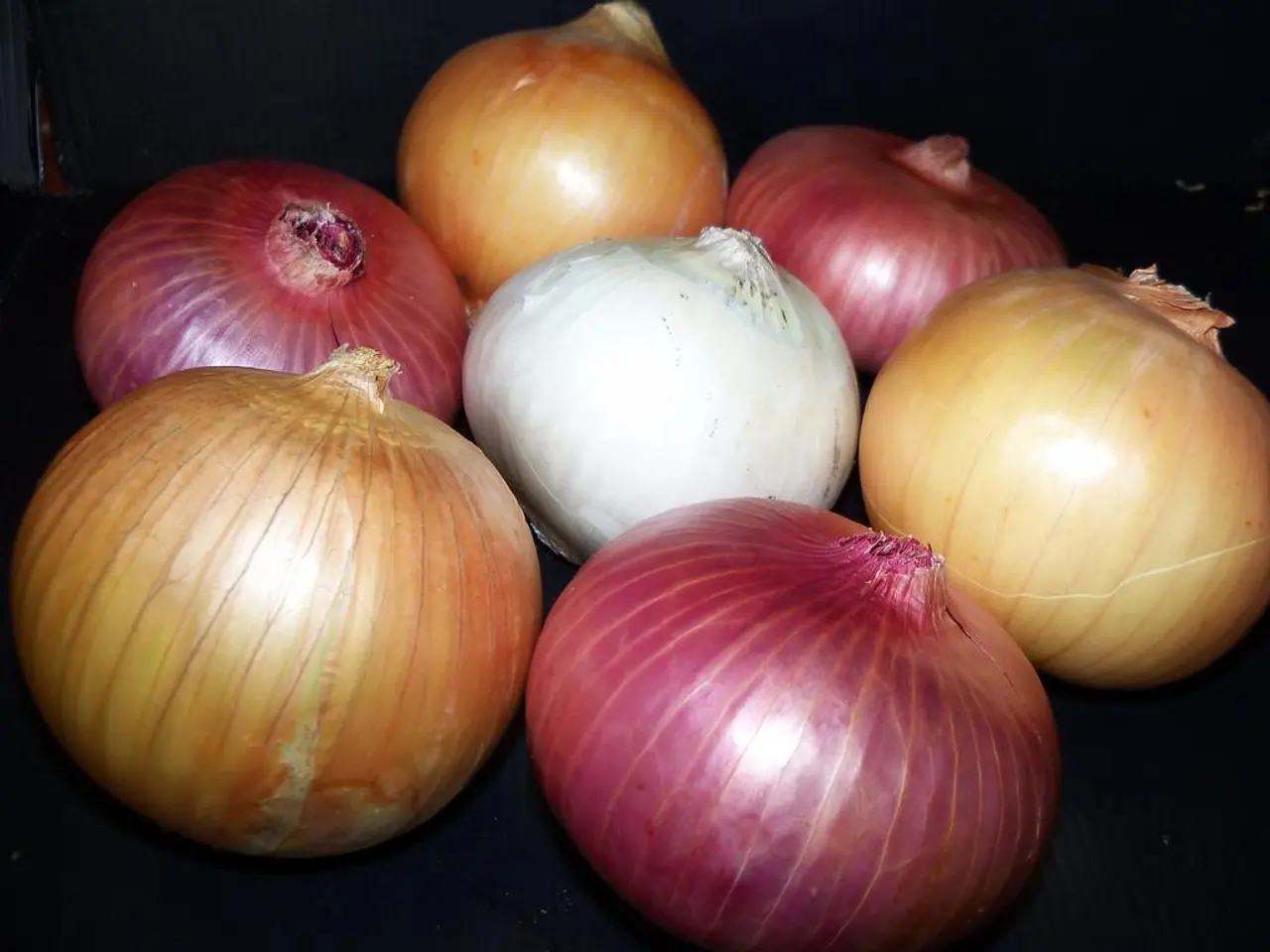Ideal Garlic Sowing in Zone 6a: Perfect Timeframe and Key Suggestions
In the world of gardening, garlic is a versatile and essential crop. Whether you're a seasoned gardener or a novice, this guide will provide you with valuable insights on how to cultivate garlic successfully.
Firstly, let's talk about the ideal soil conditions for garlic. Compost and well-rotted manure are excellent for enriching the soil, while garlic thrives in well-drained soil rich in organic matter. The soil's pH should be between 6.0 and 8.0. Avoid waterlogged soil to prevent rot, and ensure your garlic has plenty of sunlight to thrive.
When it comes to planting, the best time varies depending on your USDA hardiness zone. In Zone 6A, where garlic is planted to establish roots before the ground freezes, it's best to plant 6-8 weeks before the first frost, typically between October and December.
In colder zones like 3-6, garlic should be planted 2–4 weeks before the ground freezes or approximately 4–6 weeks before the first hard frost. Hardneck garlic varieties are recommended for these zones due to their ability to tolerate deep freezes.
In moderate winters like Zone 7, garlic can be planted 4–6 weeks before the first hard frost, allowing roots to establish before dormancy. Both hardneck and softneck varieties may be grown here.
In warmer zones like 8-9, plant garlic in late fall to early winter, around October to November, before the coolest soil temperatures hit. Softneck garlic varieties thrive in these zones due to milder winters and longer growing seasons.
In very warm zones like 10-12, garlic can be planted in late fall through winter, since garlic requires a period of cool weather to form bulbs properly. Choosing softneck or specialty varieties suited for warm climates is important.
Weeding is vital to prevent pests and diseases, as weeds can harbor pests and compete for nutrients. Mulching over winter is recommended in colder zones to protect garlic from freeze/thaw cycles and frost heaving.
After planting, it's important to maintain consistent moisture, especially during the initial growth phase. However, the soil should not be waterlogged. Curing garlic improves its flavor and longevity by arranging freshly harvested bulbs in a single layer on a raised screen in a well-ventilated area for three to four weeks. Proper spacing is crucial during curing to ensure even curing.
After curing, trim the stalks, roots, and remove any dirty outer layers. Store garlic bulbs in mesh bags or bundle them and hang them bulb-side down in a cool, dark, and dry place to extend their shelf life. Avoid storing garlic in plastic containers, which can trap moisture and lead to mold development.
Remember, rotating crops helps prevent disease buildup in the soil. Neem oil can be used as a natural pest control method for garlic plants.
Glen, a gardening expert with over 15 years of experience, offers this final tip: cover planted cloves with a 2-inch layer of mulch. Straw or leaf mulch can help retain soil moisture and suppress weeds.
With these tips, you're now equipped to cultivate garlic with confidence. Happy gardening!
[1] Garlic Planting Guide [2] Garlic Growing Guide [3] Garlic Growing Zones
[1] Transforming your home-and-garden into a thriving oasis can be indulgent with the addition of a garlic plot, as this versatile crop can improve your lifestyle and culinary pursuits.
[2] Intrigued by the home-and-garden and gardening world, you might find 'lifestyle home-and-garden' magazines or 'gardening' blogs insightful, providing tips on various aspects of garlic cultivation, just like this article.



